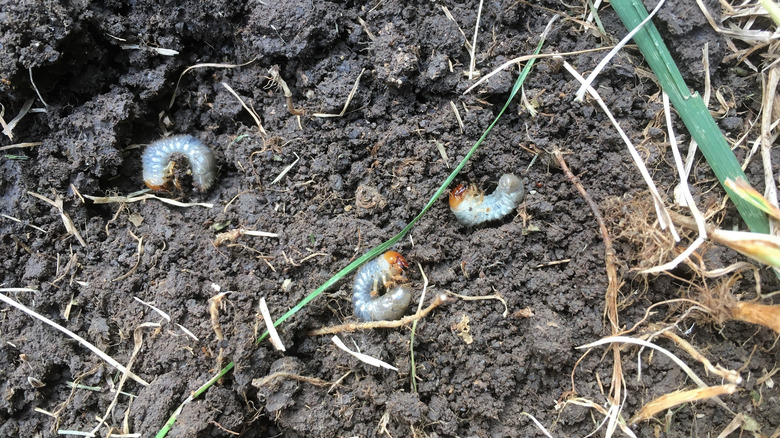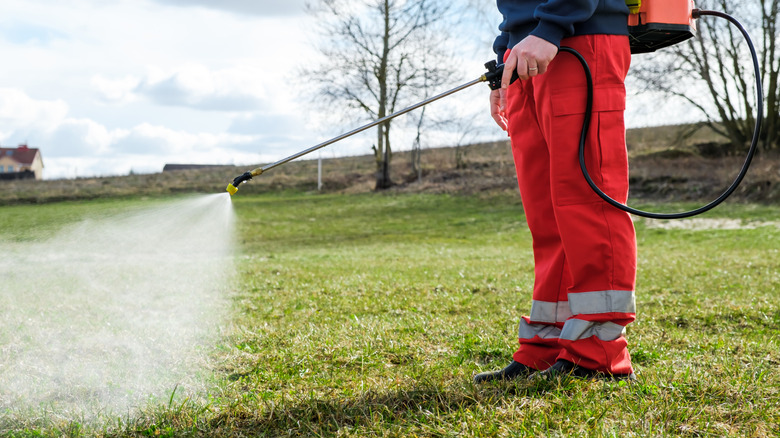Mistakes Everyone Makes When Dealing With Grub Worms
Grub worms can be one of the trickiest pests to deal with in your garden. The soil-dwelling larvae are hard to spot without digging up a patch of your yard and treating the problem can be just as tough. Even if you have correctly identified grubs in your yard, there are some common mistakes you can make that will either render the treatment ineffective or end up doing more damage than the grub worms themselves.
One of the easiest errors to make is to use a pesticide that is not effective against the pests. Specifically, pesticides where the only active ingredient is either lambda-cyhalothrin, gamma-cyhalothrin, bifenthrin, deltamethrin, cyfluthrin, or permethrin won't get rid of grub worms because these ingredients can't seep below the soil where these pests are feeding. These products will harm above-ground insects while the grubs you were targeting remain completely unaffected.
Even if you get a product with an active ingredient that can control grubs, using it incorrectly or too often can end up doing more harm than good. If you don't apply the right pesticide at the right time or in the right way, the root-munching pests might survive completely unscathed while beneficial insects get wiped out and your lawn becomes stressed from pesticide use. So, if your grass is showing signs you have a lawn grub problem, it's worth knowing how to apply the chemical treatments properly.
Avoid using pesticides too often or incorrectly
Some gardeners make the mistake of routinely applying grub control every year. But these pests aren't really a threat to your lawn unless their population is too high. Applying pesticides when you don't need them can cause unnecessary damage to your grass and harm beneficial insects. To determine whether pesticides are necessary, cut out a square foot section of sod in a few different areas of your lawn. Carefully pull the sod back and count the grubs you see before pressing it back down into the soil. If there are fewer than about five to 10 grubs per square foot, it's not a serious infestation. If some patches have too many grubs while others don't, spot treat with pesticides only in the areas that had large populations.
If you need to resort to pesticides, don't make the mistake of applying the treatments at the wrong time — they just won't work. The best time to apply grub control to your lawn depends on whether you're using a preventative or curative insecticide. Preventative treatments should be applied in June or July, just as the pests' eggs are hatching. Curative treatments, on the other hand, should be applied in spring or fall, when it's too late to use a preventative. Regardless of the type, the other key mistake gardeners make is not watering the pesticide in. To make sure the chemicals penetrate deeply enough into the soil to reach the grubs, apply at least a half inch of water to the area right after you add the pesticide.

